An article about a few books that have changed my life should be easy to write, right?
That’s why I thought initially, but boy, was I wrong. Of course, I could write all day about books that have impacted me in life-altering ways, but narrowing that list down to a handful? Oof.
I’ve read hundreds, possibly thousands of books in my life, both fiction and nonfiction, plays, poetry, graphic novels, picture books, and all of them have affected me in some way.
For now, I’ve narrowed it down to 6 novels that have changed me as a writer and as a human being. (This was originally going to be a list of fiction AND nonfiction books, but 12 books was just too much. I’ll save those for a follow-up to this post, so stay tuned!)
I think about these books all the time and something about them has burrowed into my soul and become so much a part of me that I couldn’t extricate them from who I am today.
Those takeaways might be big or small. They may or may not be what the authors intended. But they were all meaningful.
Obligatory affiliate link disclaimer: This article may contain affiliate links, which means if you click a link and buy something, I get a small kickback. I promise I’ll only recommend books and products I truly love and think you would enjoy. Okay? Okay.
Without further ado:
6 Novels That Changed Me How I Write (And Think)
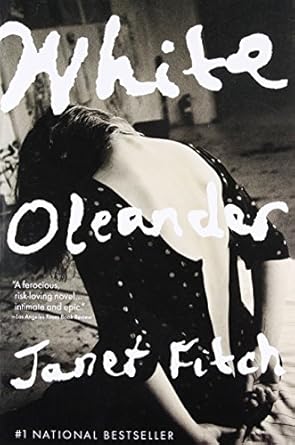
I’ve probably read this book 10 times or more. I first read it in high school when I was 16, after an artist visiting for career day recommended it to me. I forget why, but I’m glad she did. This is the story of Astrid Magnussen and her journey through a string of Los Angeles foster homes after her mother goes to prison.
Janet Fitch’s gorgeous, poetic descriptions and metaphors instilled in me a deep love of “word pictures,” and I hope to become even a fraction as masterful as she is.
She also portrays the growth of the main character so perfectly. I’m glad I read this as a teenager, when those coming-of-age stories really hit home. The tumultuous mother-daughter relationship in the story also fascinated me despite my close relationship with my own mom, and absolutely inspired the relationship in The Goblin’s Daughter.
Now, I’ll come out and say it right away: Sometimes, this book is depressing as hell. There are some truly messed up situations here that feel even more insane to me as an adult. But this book is so beautifully written, that it’s probably shaped my writing style more than any other, and to this day I think I’m incapable of writing a book that doesn’t feature an artist in some way. (See Melissa in The Goblin’s Daughter, Gabby in Keepers of Time, and my protagonist in my current drafting project.)
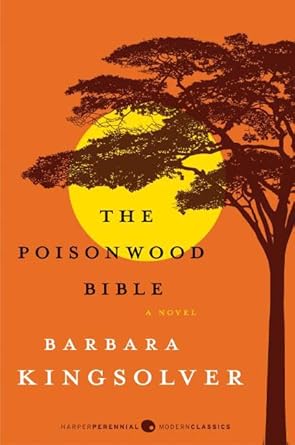
The Poisonwood Bible by Barbara Kingsolver
I love everything Barbara Kingsolver has ever written, but this is far and away my favorite. It’s the tale of a 1950’s preacher and his family who move to the Congo to spread Christianity whether the people there want it or not.
It does not go well, to put it mildly.
I first read this in my early twenties, (and many times since) and it taught me a lot about different perspectives, not just from the different POV characters, but from the culture clash of a southern baptist family in a land where the rules are different, and how that preacher takes zero time to understand anyone else around him.
The story spans decades and features several different POVs, including the preacher’s wife and four daughters, but never the preacher himself. As a writer, I learned so much from Kingsolver’s masterful handling of the different voices and perspectives of her characters, and I loved watching the four daughters grow up.
My favorite character was Ada, who inspired Luna in Keepers of Time. In fact, the structure of telling entire chapters from different POVs is the structure I chose for Keepers.
This beautiful book is rich with wisdom for life and writing.

Annihilation by Jeff Vandermeer
I saw the movie adaptation with Natalie Portman first and then read the Southern Reach trilogy. I love them both dearly and think of them as completely separate entities.
This sci-fi book is the journal of a biologist who is part of a team of four women sent to investigate Area X, where the natural world behaves in strange and unpredictable ways, creatures spontaneously mutate, and the environment unravels the mental state of anyone who ventures inside.
I love the strangeness and beauty of this demented landscape. I’m also fascinated with semi-sentient structures, such as the “tower” the team explores. (It partially inspired the functioning of the Clock Tower in book 2 of Keepers of Time, coming early 2025!)
The biologist also fascinated me as a character because she’s an extreme introvert and possible neurodivergent who struggles to function in normal relationships, preferring the natural world to human company.
I’ve only seen hints of inspiration from this story in my writing so far, but I think it’ll become much more prominent in future projects. I’ve had a world and collection of characters brewing in me for a few years, and this book provided some of the kindling.
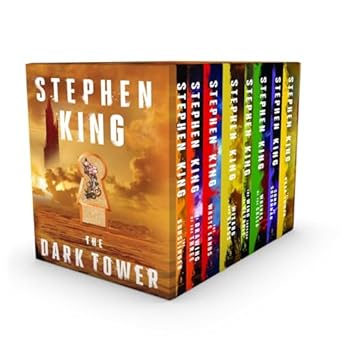
The Dark Tower series by Stephen King
I’m totally cheating here because this is technically seven books, but let’s think of it as one long story, shall we?
Stephen King is known as a horror author, but I think his dark fantasy is where he really shines.
This fever dream of a series follows Roland, the last gunslinger in Mid-World, in his relentless pursuit of the Dark Tower, a structure that stands at the apex of time and space. The story is a kaleidoscope of memorable characters, strange creatures, horror, dark magic, and all the things that make me drool over a story.
Not gonna lie, this was a huge influence for my Keepers of Time series, especially book 2. The story-within-a-story flashback structure and delicious impending doom of Wizard and Glass, served as a model for the structure of Keepers book 2.
And the Dark Tower itself? Well, I’m obsessed with mysterious, powerful buildings, and there are bits of the Dark Tower in my Clock Tower.
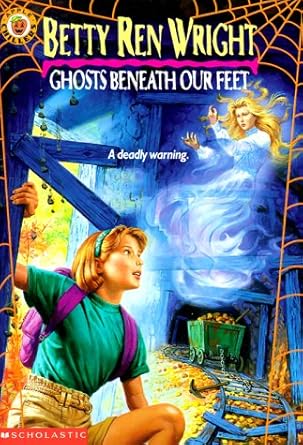
Ghosts Beneath Our Feet by Betty Ren Wright
What? What is a middle grade ghost story doing on this list?
This is the book that made me fall in love with ghost stories and all things creepy. I haven’t read it in decades and don’t remember plot details, but it’s about a young girl visiting a mining town supposedly haunted by the ghosts of miners who were trapped in a terrible accident.
This creeped me out so thoroughly and deliciously that it set me on a lifelong pursuit of the best ghost stories.
I first read this when I was ten years old, after I’d already plowed my way through most of the Goosebumps series (my favorites of which were Ghost Beach and The Ghost Next Door, of course). Ironically, I’ve never written a ghost story. I don’t know if it’s ghosts or the general mood that I loved, but this instilled in me an appreciation for the power of subtle creepiness. Sure, I love full out horror, but there’s something about a face at the window or seeing something strange out of the corner of your eye that intrigues me.
The Goblin’s Daughter is, in many ways, the story of a haunting, only with changelings instead of ghosts. You’ll find a lot of the same creaking doors, mysteriously moved objects, and footsteps when there should be none that you’d find in any ghost story.
The tone of ghost stories finds its way into most things I write. And someday, yes, I will write an actual ghost story.
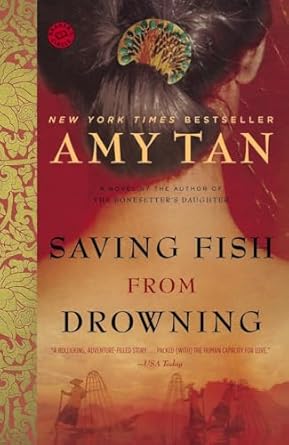
Saving Fish from Drowning by Amy Tan
This story is told from the perspective of a woman who was supposed to accompany her friends on their trip to Myanmar, but died before she could. So, her spunky ghost follows them as her careful trip goes more and more wrong. And she is delightful.
I love unusual perspectives and narrative systems, and this one has always intrigued me because it’s a first person omniscient narrator. Quick review: This means that the story is told from a single point of view, using “I” and “me” pronouns, but she knows what everyone is doing and thinking. This omniscience is almost always limited to third person narrators.
This book inspired me to play with perspective because it showed me it was even possible to veer away from the norm. The point of view does get a little abstract in The Goblin’s Daughter, but I expect to experiment with POV a lot more in the future.
Stories Make Us Better
Often, my favorite stories are the ones that tickle my “writer brain” somehow, not necessarily the ones that have the best ratings (though most of these are bestsellers).
Interestingly enough, not all of these are fantasy, and the ones that are aren’t the type of fantasy I write. It’s fascinating how things go into our brain and come out in completely different forms, as something completely our own.
While all of these have influenced my writing in at least a small way that I can see, they’ve also affected my craft in ways I haven’t noticed yet, and that I can’t yet predict.
It all goes into the brain blender and comes out in a way we can’t anticipate. This is why it’s so crucial for authors to read not only their own genre, but across genres, and why it’s so important for humans in general to read, to consume stories and spend time in other points of view.
Stories make us better writers and better people. Let’s keep reading!